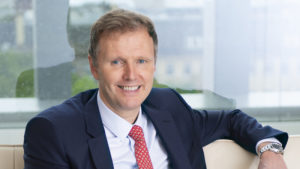Who cares?
Rather, what the additional “transaction costs” do convey is what Hollands calls “the friction of doing business”.
“I don’t actually like the term ‘hidden charges’. Yes, they’ve been undisclosed charges but hidden almost implies there’s been some type of subterfuge going on. This is not a source of revenue for managers and it’s in their interest to pay as low a rate on dealing commission as possible. Very large companies will have that advantage, where you are running very large pools of assets and you might be shifting large volumes. Clearly, they may get keener dealing rates over a small fund.”
Some criticised the Lang Cat analyst for sewing the seeds of distrust and adding fuel to the fire of an ongoing fee witch hunt. Fee transparency is all well and good, they say, but it isn’t the only thing that matters to investors.
Yearsley says: “I think investors need to question the cost of investing, and I think transparency is important, but you shouldn’t get obsessed about it.
“Performance figures on their own don’t mean anything; cost on its own doesn’t mean anything. You need to put it all together – that’s the performance, that’s the cost, that’s the style, that’s what the manager is doing – and then you can look at it as a whole picture.”
“It is interesting to know the full cost of ownership, undoubtedly,” agrees Hollands. “But the real test when it comes to actively managed funds is are those costs justified by the level of return above the benchmark that the manager has or hasn’t delivered? At the end of the day, if the manager has moved the portfolio around and has incurred above average transaction costs in a period but that has delivered superior investment performance … frankly, that’s rather academic.”
A solution?
One of the problems with the newly disclosed costs is that unlike the OCF, they are backward-looking and, therefore, aren’t necessarily the best gauge of future costs.
“It’s an important thing to remember that this is a snapshot of the previous reporting period and doesn’t necessarily follow it through into the future as the way an annual management charge will do,” Hollands stresses. “I think it’s interesting, it’s useful to have this additional transparency but I’m not sure there are such a hard set of general conclusions you can take from this.”
Setting aside the imperfect quality of the “transaction costs” figure, Daniel Godfrey, former chief executive of the Investment Association, says there is an underlying problem in the way these calculations are made.
“I’ve always thought the methodology to get to total costs was flawed,” he admits. “I think that combining implicit transaction costs with explicit transaction costs is always going to get off to a not realistic outcome.”
So, what, if anything, can be done?
Yearsley surmises that the problem could have something to do with the “standardisation of how the costs are reported” or the lack thereof.
“The OCF seems to be well established now – that’s how it is, that’s what’s included, bang,” he says. “I don’t think these ones are as straightforward and therefore maybe that’s the issue, that different groups treat them in different ways.”
Standardising this figure might also help alleviate the current problem of some funds somehow ending up with zero transaction costs, something which baffled the Lang Cat’s Barrett too.
The end goal is trying to come up with a calculation that is “meaningful” to people, says Godfrey.
“Until you get to something that is meaningful in the sense that people can understand it and comprehensive in that it doesn’t leave behind any hidden charges, I’m not sure you’re going to achieve the objective you want which is to provide consumers with information that enables them to make better decisions.”
While uncovering the so-called hidden costs of the fund world has not provided investors with a perfect cost breakdown, it has given them slightly more clarity on the costs of investing. It’s a first draft, to be sure, but with some tweaks here and there, it could end up becoming more beneficial to the end client in the long-run.







